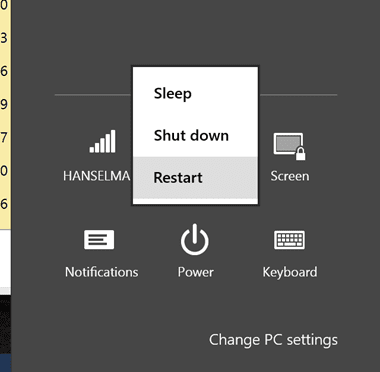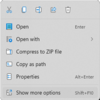- Local time
- 11:58 AM
- Posts
- 5,685
- OS
- Windows 10 Pro + others in VHDs
It is quite confusing when you go to add windows features.
You see tick boxes for:
1) Hyper-V hypervisor
2) Windows Hypervisor Platform
3) Virtual Machine Platform
So which do you need and when?
1) Obviously, you need to install Hyper-V Hypervisor if you want to run Hyper-V.
This is the full type 1 hypervisor
2) Windows Hypervisor Platform is (effectively) a cut down version of the Hyper-V platform but also has additional APIs.
This needs to be installed if you want to run (latest) Type 2 Hypervisors on pcs with Hyper-V installed (tick WHP)
It also needs to be installed to use additional security tools like Windows Defender Credential Guard.
However, if you have Hyper-V installed, you do not need to tick this box.
3) Virtual Machine Platform is a bit of a mystery but is needed for WSA (sub system for Android) amongst other things. MS is pretty vague about how VMP differs from the full Hyper-V Hypervisor. As far as I can make out it will run virtualised apps but unlike Hyper-V does not run a full OS. In general, if app needs this, you will be told. It is not needed for type 2 hypervisors. As far as I can tell it happily coexists with the Hyper-V Hypervisor.
Now here is a couple of crucial things to understand:
1) Type 2 hypervisors can now coexist with Hyper-V (if WHP is ticked) but they can be very slow. You get best performance out of a type 2 hypervisor if it works in native mode i.e. neither Hyper-v or WHP is installed. The old dual boot edit trick is still the best way of running type 2 hypervisors.

 www.hanselman.com
www.hanselman.com
2) To run as the dual boot method, you have to disable Windows Defender Credential Guard which increases security risks. This unfortunately also disables Windows Defender Credential Guard in Hyper-V mode, so you would need to turn it on again. Another solution is to dual boot Windows - one with HyperV and WDCG, and one without.
In the end, although Hyper-V has a steeper learning curves, it is definitely more efficient when running Pro\Edu\Enterprise editions.
You can run Home but as Home does not officially have an RDP server, it will only run in basic mode with no sound.
Of course, Hyper-V is not on Home (although this can be remedied).
You see tick boxes for:
1) Hyper-V hypervisor
2) Windows Hypervisor Platform
3) Virtual Machine Platform
So which do you need and when?
1) Obviously, you need to install Hyper-V Hypervisor if you want to run Hyper-V.
This is the full type 1 hypervisor
2) Windows Hypervisor Platform is (effectively) a cut down version of the Hyper-V platform but also has additional APIs.
This needs to be installed if you want to run (latest) Type 2 Hypervisors on pcs with Hyper-V installed (tick WHP)
It also needs to be installed to use additional security tools like Windows Defender Credential Guard.
However, if you have Hyper-V installed, you do not need to tick this box.
3) Virtual Machine Platform is a bit of a mystery but is needed for WSA (sub system for Android) amongst other things. MS is pretty vague about how VMP differs from the full Hyper-V Hypervisor. As far as I can make out it will run virtualised apps but unlike Hyper-V does not run a full OS. In general, if app needs this, you will be told. It is not needed for type 2 hypervisors. As far as I can tell it happily coexists with the Hyper-V Hypervisor.
Now here is a couple of crucial things to understand:
1) Type 2 hypervisors can now coexist with Hyper-V (if WHP is ticked) but they can be very slow. You get best performance out of a type 2 hypervisor if it works in native mode i.e. neither Hyper-v or WHP is installed. The old dual boot edit trick is still the best way of running type 2 hypervisors.

Switch easily between VirtualBox and Hyper-V with a BCDEdit boot Entry in Windows 8.1
I've been using GenyMotion for a FAST Android Emulator when developing with ...
2) To run as the dual boot method, you have to disable Windows Defender Credential Guard which increases security risks. This unfortunately also disables Windows Defender Credential Guard in Hyper-V mode, so you would need to turn it on again. Another solution is to dual boot Windows - one with HyperV and WDCG, and one without.
In the end, although Hyper-V has a steeper learning curves, it is definitely more efficient when running Pro\Edu\Enterprise editions.
You can run Home but as Home does not officially have an RDP server, it will only run in basic mode with no sound.
Of course, Hyper-V is not on Home (although this can be remedied).
Last edited:
My Computer
System One
-
- OS
- Windows 10 Pro + others in VHDs
- Computer type
- Laptop
- Manufacturer/Model
- ASUS Vivobook 14
- CPU
- I7
- Motherboard
- Yep, Laptop has one.
- Memory
- 16 GB
- Graphics Card(s)
- Integrated Intel Iris XE
- Sound Card
- Realtek built in
- Monitor(s) Displays
- N/A
- Screen Resolution
- 1920x1080
- Hard Drives
- 1 TB Optane NVME SSD, 1 TB NVME SSD
- PSU
- Yep, got one
- Case
- Yep, got one
- Cooling
- Stella Artois
- Keyboard
- Built in
- Mouse
- Bluetooth , wired
- Internet Speed
- 72 Mb/s :-(
- Browser
- Edge mostly
- Antivirus
- Defender
- Other Info
- TPM 2.0

















